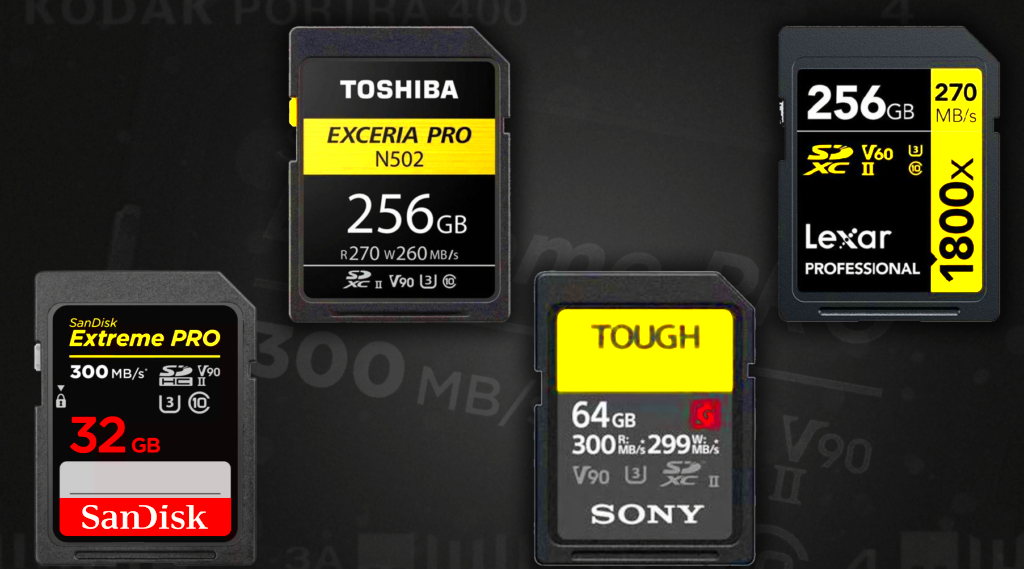RAW images are the unprocessed files directly captured by your camera's sensor. Unlike JPEGs or PNGs, RAW files retain all the image data, providing you with greater flexibility during editing. This makes RAW the preferred choice for professional photographers, especially when image quality is the top priority. However, this also means RAW images are significantly larger in size compared to compressed formats. Understanding the size of RAW files is crucial when deciding how much storage you need, particularly when using cards like a 64GB SD card. In this post, we’ll explore how many RAW images you can store on a 64GB card, and what factors influence file sizes.
Factors That Affect RAW Image Size

Several factors contribute to the size of RAW images. Here are the key ones:
- Camera Model and Sensor Size: Different cameras have varying sensor sizes, which affect how much data each photo captures. Full-frame cameras usually produce larger RAW files than crop-sensor cameras.
- Image Resolution: The higher the resolution, the larger the RAW file. A 20-megapixel image will be smaller than a 50-megapixel one, for example.
- Compression Type: Some cameras apply light compression to RAW files, which reduces the file size, while others use uncompressed formats, resulting in much larger files.
- Image Format: Some RAW formats, such as Canon’s CR2 or Nikon’s NEF, may be slightly larger or smaller than others due to how the data is encoded.
Understanding these factors can help you estimate the size of your RAW files, which is important when calculating how many you can store on your SD card.
Also Read This: How to Change a YouTube Video from Short to Regular Upload
How Many RAW Images Fit on a 64GB Card?

To estimate how many RAW images you can store on a 64GB card, we first need to consider the average size of a RAW file. The size can range from 20MB to 50MB per image, depending on the camera and settings. For example:
| RAW File Size | Number of Images on 64GB Card |
|---|---|
| 20MB | Approximately 3,200 images |
| 30MB | Approximately 2,130 images |
| 50MB | Approximately 1,280 images |
As you can see, the number of RAW images that fit on a 64GB card varies based on the size of each individual file. If you’re shooting at a high resolution or using a camera that generates larger RAW files, you might expect to store fewer images. On the other hand, with smaller RAW files, you could fit more photos on the same card.
Also Read This: How to Increase Sales on Shutterstock: A Comprehensive Guide
Comparing RAW Image Sizes from Different Cameras
The size of a RAW file can vary greatly depending on the camera you use. This means that two photographers using different camera models may get different storage results even with the same 64GB card. Let’s break down how different camera brands and models can impact RAW image size:
- Full-Frame Cameras: Full-frame sensors capture more detail, resulting in larger RAW files. For instance, a 24MP full-frame camera like the Canon EOS 5D Mark IV might produce RAW files that average 30-40MB.
- Cropped-Sensor Cameras: These typically create smaller RAW files since they have fewer pixels compared to full-frame sensors. A 20MP crop-sensor camera might generate files around 20-30MB each.
- Medium Format Cameras: Medium format cameras, which feature even larger sensors (often 50MP or higher), produce significantly larger files, sometimes exceeding 100MB per RAW image.
- Camera Settings: Depending on the settings, such as ISO, dynamic range, and whether you’re shooting with compressed or uncompressed RAW, the file size can fluctuate even within the same camera model.
For photographers, it’s essential to be aware of these differences. The same 64GB SD card might store anywhere from 1,000 images to 3,000 images, depending on the camera’s RAW file size. Always check your camera's RAW file size to better understand how much storage you need.
Also Read This: Stunning Photos of the Super Volcano in the USA
Tips for Maximizing Storage on Your 64GB Card
Want to store as many RAW images as possible on your 64GB card? Here are some practical tips to help you maximize your storage:
- Use Smaller RAW File Sizes: Some cameras offer a “compressed RAW” option, which reduces file size without sacrificing too much image quality. This is a good compromise if you need more storage space.
- Adjust Image Quality Settings: While RAW files are larger by nature, tweaking settings like ISO and dynamic range can help you achieve smaller files while maintaining high image quality.
- Offload Images Regularly: Don’t wait until your card is full. Back up your photos onto a laptop or external hard drive, and clear space to keep shooting.
- Format Your Card Properly: Regularly formatting your SD card ensures it works optimally, freeing up any corrupted or lost data that could reduce your available storage.
With these simple steps, you’ll get the most out of your 64GB card and keep your workflow moving smoothly. However, if you’re still running low on space, it might be time to think about upgrading your storage.
Also Read This: How to Record Audio on Mac from YouTube for Your Projects
When Should You Consider Upgrading Your Storage?
While a 64GB card can work for many photographers, there comes a time when upgrading your storage is necessary. Here are some signs it’s time for a new, larger card:
- Frequent Running Out of Space: If you’re constantly running out of room during shoots, it’s a clear sign that your card size isn’t sufficient for your needs.
- Shooting at Higher Resolutions: If you’ve upgraded to a camera with a higher resolution (say, 50MP or more), your RAW files will be significantly larger, and a 64GB card might not hold enough images.
- Extended Shoots or Travel: For long shoots or when you’re traveling without easy access to a computer or backup device, a larger card ensures you don’t run out of space halfway through your work.
- Professional Work: If you’re shooting for clients or need to store high-quality images in bulk, investing in a 128GB or 256GB card can help prevent interruptions in your workflow.
Ultimately, if you find yourself constantly worrying about storage capacity, upgrading to a larger card is the best way to ensure that you never miss the perfect shot due to lack of space.
Also Read This: Downloader for Pinterest – How to Download Pinterest Content on Your PC
Common Issues with Storing RAW Images on Limited Storage
While 64GB cards can be sufficient for many photographers, they do have their limitations. Storing RAW images on a limited storage device often leads to a few common problems that can disrupt your workflow. Let’s look at these issues:
- Running Out of Space Quickly: RAW files are large, and when you shoot multiple high-resolution images, you may quickly find that your storage capacity is used up. This can cause you to stop shooting or constantly worry about deleting files to free up space.
- Slower Performance: When a storage card gets close to full, its performance may degrade. The read and write speeds can slow down, affecting your ability to transfer files or shoot in continuous mode.
- File Corruption Risks: If you’re constantly swapping between multiple cards to make room for more photos, there’s a risk of corrupting files during transfers. Always safely eject your cards and avoid removing them abruptly while files are being written.
- Limited Flexibility for Extended Shoots: On long shoots or trips where you can’t offload photos immediately, running out of storage space can be a major issue. You may be forced to compromise on the number of images you capture.
- Backup Challenges: Limited storage means you’ll need to offload your images regularly. Without easy access to a backup option, this can become a hassle and increase the risk of losing important photos.
To avoid these issues, it’s important to plan ahead for your shoots, know how many images your card can hold, and keep an eye on your storage limits.
Also Read This: how to remove watermark of adobe stock
Frequently Asked Questions
Here are answers to some common questions about storing RAW images and managing limited storage:
- How many RAW images can a 64GB card hold? The number of RAW images a 64GB card can store depends on the file size, which typically ranges from 20MB to 50MB per image. Generally, you can expect to store anywhere from 1,200 to 3,200 images, depending on the camera and settings.
- Can I store both RAW and JPEG on the same card? Yes, most cameras allow you to store both RAW and JPEG files on the same memory card. However, keep in mind that JPEG files are smaller, so storing a large number of them can help you extend your available space.
- Is it safe to store RAW images on a 64GB card long-term? While a 64GB card is fine for short-term use, it’s important to regularly back up your images to avoid data loss. Cards can fail over time, and it’s not a good idea to rely on a single card for long-term storage.
- Do I need to format my card before each use? It’s a good practice to format your SD card before each use to ensure it’s clear of old data and operating at peak performance. Just be sure to back up your files first!
- How do I know if my RAW files are too large for my card? Check the average file size of your RAW images (usually displayed in your camera’s settings or file info). Compare this to the total storage capacity of your card to get a rough idea of how many images it can hold.
Conclusion: Optimizing Storage for Your Photography Needs
Understanding storage needs is a crucial part of photography, especially when working with large RAW files. A 64GB card can be sufficient for many photographers, but it requires careful planning to ensure you don’t run out of space mid-shoot. Here’s how to optimize your storage:
- Know Your File Size: Always check the average RAW file size for your camera, and calculate how many images your card can hold before heading out on a shoot.
- Manage Your Storage Wisely: Consider using compressed RAW formats if your camera supports it. Also, try to offload your images regularly to prevent running out of space.
- Invest in Additional Cards: If you often shoot large files or long shoots, invest in additional cards so you’re never caught without enough space.
- Use Reliable Backup Solutions: Always back up your RAW files regularly. Use external hard drives, cloud storage, or a laptop to ensure your images are safely stored.
By optimizing how you manage your storage, you can reduce the stress of running out of space and keep your photography workflow efficient and smooth. Whether you’re using a 64GB card or larger storage, understanding how to maximize its capacity will help you capture stunning images without interruption.

 admin
admin








